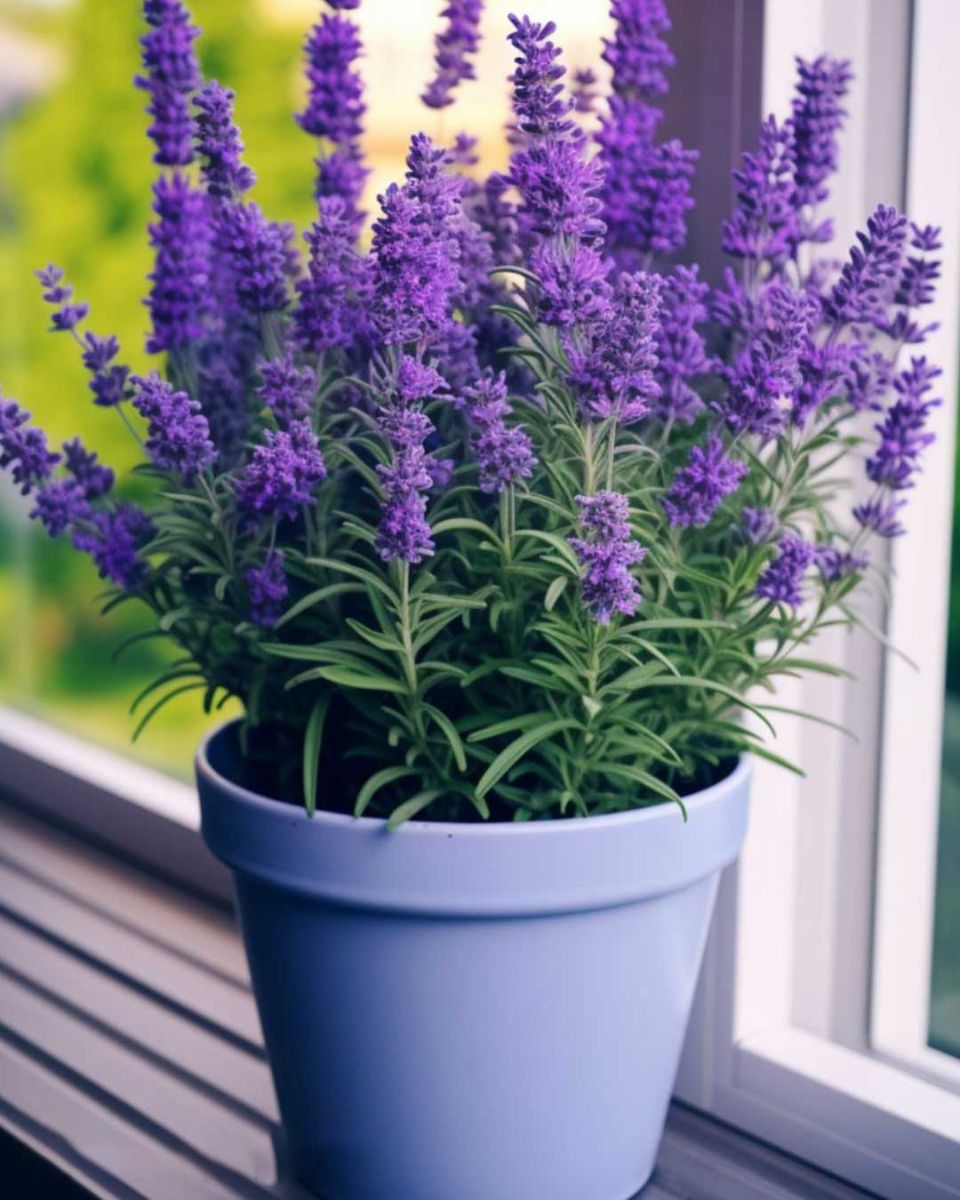Lavandula, commonly known as lavender, is a fragrant and versatile herb that has been treasured for centuries for its enchanting aroma, medicinal properties, and ornamental value. Not only does lavender offer a feast for the senses, but it also presents a myriad of benefits for both physical and mental well-being.
In this article, we will delve into the various advantages of growing lavender and provide a comprehensive guide on how to successfully cultivate this delightful herb in a pot within the comfort of your own home.
The Benefits of Growing Lavender:
Aromatherapy and Stress Relief: The aroma of lavender is renowned for its calming and soothing effects. Inhaling its scent can help reduce stress and anxiety, promoting relaxation and a sense of tranquility. Many people use lavender essential oil for aromatherapy to create a peaceful ambiance at home.
Natural Sleep Aid: Lavender’s calming scent extends to aiding sleep. Placing dried lavender sachets under pillows or near the bed can encourage restful sleep by promoting relaxation and reducing insomnia.
Culinary Uses: While not as common as its aromatic qualities, certain types of lavender are edible. Culinary lavender can be used to infuse flavor into desserts, baked goods, teas, and even savory dishes.
Medicinal Properties: Lavender possesses antiseptic and anti-inflammatory properties. Lavender essential oil can be used topically to soothe minor burns, insect bites, and skin irritations. It’s also known to have pain-relieving effects.
Pollinator Attraction: Lavender’s vibrant purple blooms are not only visually appealing but also attract pollinators like bees and butterflies. Planting lavender in your garden can contribute to a healthier ecosystem by supporting these essential insects.
Lavender Crafts: Dried lavender can be used in various crafts, such as making potpourri, scented candles, and homemade soaps. These crafts can serve as personalized gifts or enhance the ambiance of your living space.
How to Grow Lavender in a Pot at Home:
1. Selecting a Pot:
Choose a pot with good drainage to prevent waterlogging.
Opt for a pot that’s at least 12 inches in diameter to provide sufficient space for the plant to grow.
Or you can buy these beautiful self-watering, vintage-inspired mason jars here.
2. Choosing the Right Soil:
Lavender prefers well-draining soil. Use a mixture of potting soil and sand or perlite to ensure proper drainage.
3. Picking the Lavender Variety:
English lavender (Lavandula angustifolia) is a popular choice for pot cultivation due to its compact size and sweet fragrance.
Other varieties like Spanish lavender (Lavandula stoechas) and French lavender (Lavandula dentata) can also be grown in pots.
4. Planting:
Fill the pot with the prepared soil mixture.
Plant the lavender seedling or cutting in the center of the pot, making sure not to bury the crown (where the stem meets the roots).
5. Sunlight and Watering:
Lavender thrives in full sunlight, so place the pot in a sunny spot.
Water sparingly, allowing the soil to dry out between watering to prevent root rot.
6. Pruning:
Regular pruning after flowering helps maintain the plant’s shape and encourages new growth.
7. Harvesting:
Harvest lavender flowers just before they are fully open for the most potent fragrance.
Dry the harvested flowers by bundling them and hanging them upside down in a cool, dry place.
8. Winter Care:
Lavender is sensitive to cold. During the winter, move the pot indoors or to a sheltered area to protect it from freezing temperatures.
